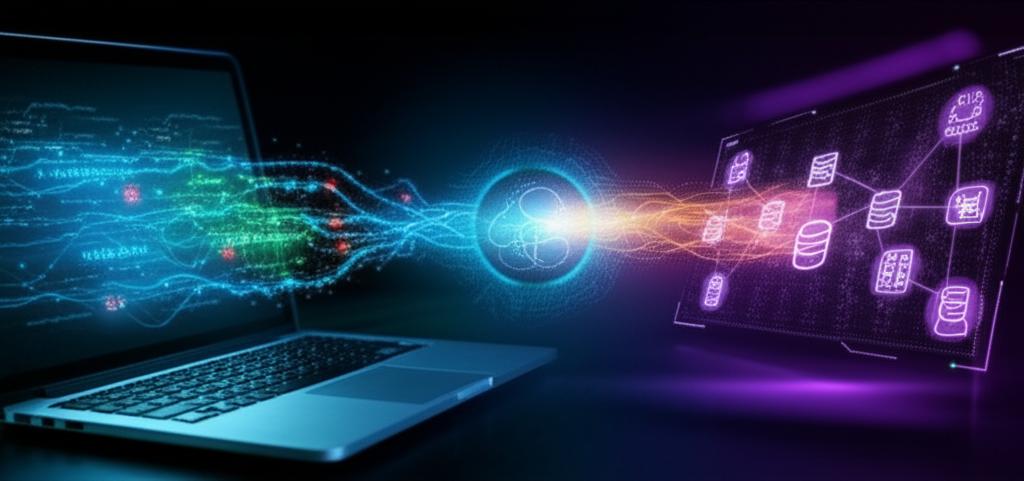EDR vs SIEM: Understanding the Difference & Why You Need Both for Cybersecurity
Understanding EDR vs SIEM: A Critical Cybersecurity Comparison
In the complex landscape of modern cybersecurity, organizations face an overwhelming barrage of threats. To combat these, various sophisticated tools have emerged. Among the most crucial are Endpoint Detection and Response (EDR) and Security Information and Event Management (SIEM) systems. While often discussed together, and sometimes even confused, EDR and SIEM serve distinct yet complementary roles in a robust security strategy. Understanding their individual strengths and how they integrate is vital for building a resilient defense.
What is Endpoint Detection and Response (EDR)?
Endpoint Detection and Response (EDR) refers to a cybersecurity solution that continuously monitors and collects data from endpoints (such as laptops, desktops, servers, and mobile devices) to detect, investigate, and respond to threats. EDR goes beyond traditional antivirus by focusing on behavior rather than just known signatures, providing deep visibility into endpoint activity.
- Real-time Monitoring & Data Collection: Gathers rich telemetry data, including process execution, file access, network connections, and user activity.
- Advanced Threat Detection: Uses behavioral analysis, machine learning, and threat intelligence to identify suspicious activities and zero-day exploits that might bypass traditional defenses.
- Automated Response: Can automatically contain threats by isolating compromised endpoints, terminating malicious processes, or reverting changes.
- Threat Hunting & Forensics: Provides tools for security analysts to proactively search for threats and conduct in-depth investigations after an incident.
EDR systems offer unparalleled visibility into the “ground level” of your network, giving you granular detail about what’s happening on individual devices.
What is Security Information and Event Management (SIEM)?
Security Information and Event Management (SIEM) is a comprehensive security solution that aggregates, correlates, and analyzes security event data from a multitude of sources across an organization’s entire IT infrastructure. This includes logs from network devices (firewalls, routers), servers, applications, cloud services, identity and access management systems, and even EDR solutions.
- Log Aggregation & Centralization: Collects logs and event data from virtually every system in your environment into a central repository.
- Event Correlation & Analytics: Applies rules, machine learning, and behavioral analytics to identify patterns, anomalies, and potential security incidents that span multiple systems.
- Compliance Reporting: Facilitates meeting regulatory compliance requirements (e.g., GDPR, HIPAA, PCI DSS) by providing audit trails and reports.
- Centralized Security Visibility: Offers a holistic view of the security posture across the entire organization, helping security teams understand the broader context of events.
SIEM platforms act as the “brain” of a security operation center (SOC), providing the context needed to understand enterprise-wide security events.
EDR vs SIEM: A Direct Comparison
While both are critical for cybersecurity, their operational focus and scope differ significantly:
| Feature | EDR (Endpoint Detection and Response) | SIEM (Security Information and Event Management) |
|---|---|---|
| Primary Focus | Deep visibility, detection, and response on individual endpoints. | Holistic security visibility, log management, and event correlation across the entire IT infrastructure. |
| Data Sources | Endpoint telemetry (process activity, file changes, network connections, user actions). | Logs from all IT systems (firewalls, servers, applications, cloud, EDR, IDS/IPS, etc.). |
| Detection Method | Behavioral analysis, machine learning, threat intelligence, anomaly detection for endpoint-specific threats. | Rule-based correlation, behavioral analytics, known attack patterns, compliance checks across disparate log sources. |
| Response Capability | Automated containment, isolation, remediation directly on the endpoint. | Alerting, incident management workflows, orchestration with other security tools, broad context for manual response. |
| Scope of View | Granular, detailed view of endpoint activity. | Broad, contextualized view of security events across the entire enterprise. |
| Threat Type | Sophisticated endpoint attacks, malware, fileless attacks, insider threats on endpoints. | Network-wide attacks, policy violations, compliance breaches, broad attack campaigns, multi-stage attacks. |
The Power of Synergy: Why You Need Both
Instead of an “either/or” choice, EDR and SIEM are best viewed as complementary components of a comprehensive security strategy. Their combined power creates a much stronger defense posture:
- Enhanced Threat Hunting: EDR provides the detailed forensic data from endpoints, which, when fed into a SIEM, can be correlated with network logs, authentication events, and other data for a complete attack narrative.
- Faster Incident Response: A SIEM can alert on a broad pattern of suspicious activity, and then EDR can provide the immediate, deep dive into the affected endpoints for rapid containment and remediation.
- Comprehensive Visibility: EDR offers the “what happened on the device” while SIEM offers the “what happened across the entire network and system.” Together, they eliminate blind spots.
- Better Context & Prioritization: SIEM can elevate an EDR alert from a single endpoint to a critical, enterprise-wide incident by correlating it with other events, helping security teams prioritize effectively.
- Robust Compliance: SIEM provides the central log management and reporting required for compliance, while EDR ensures endpoint-level adherence and visibility.
“EDR provides the microscopic view, while SIEM offers the macroscopic perspective. Together, they create a complete picture of your organization’s security health.”
Conclusion: A Unified Approach to Modern Cybersecurity
In the ongoing battle against cyber threats, neither EDR nor SIEM is a standalone silver bullet. EDR excels at protecting the critical frontline your endpoints with deep visibility and rapid response capabilities. SIEM, on the other hand, provides the overarching intelligence and correlation needed to understand and manage security across your entire digital ecosystem. The most effective security strategies integrate EDR and SIEM, allowing organizations to leverage the granular insights of EDR within the broader context provided by SIEM. This unified approach is essential for achieving true cyber resilience in today’s threat landscape.







